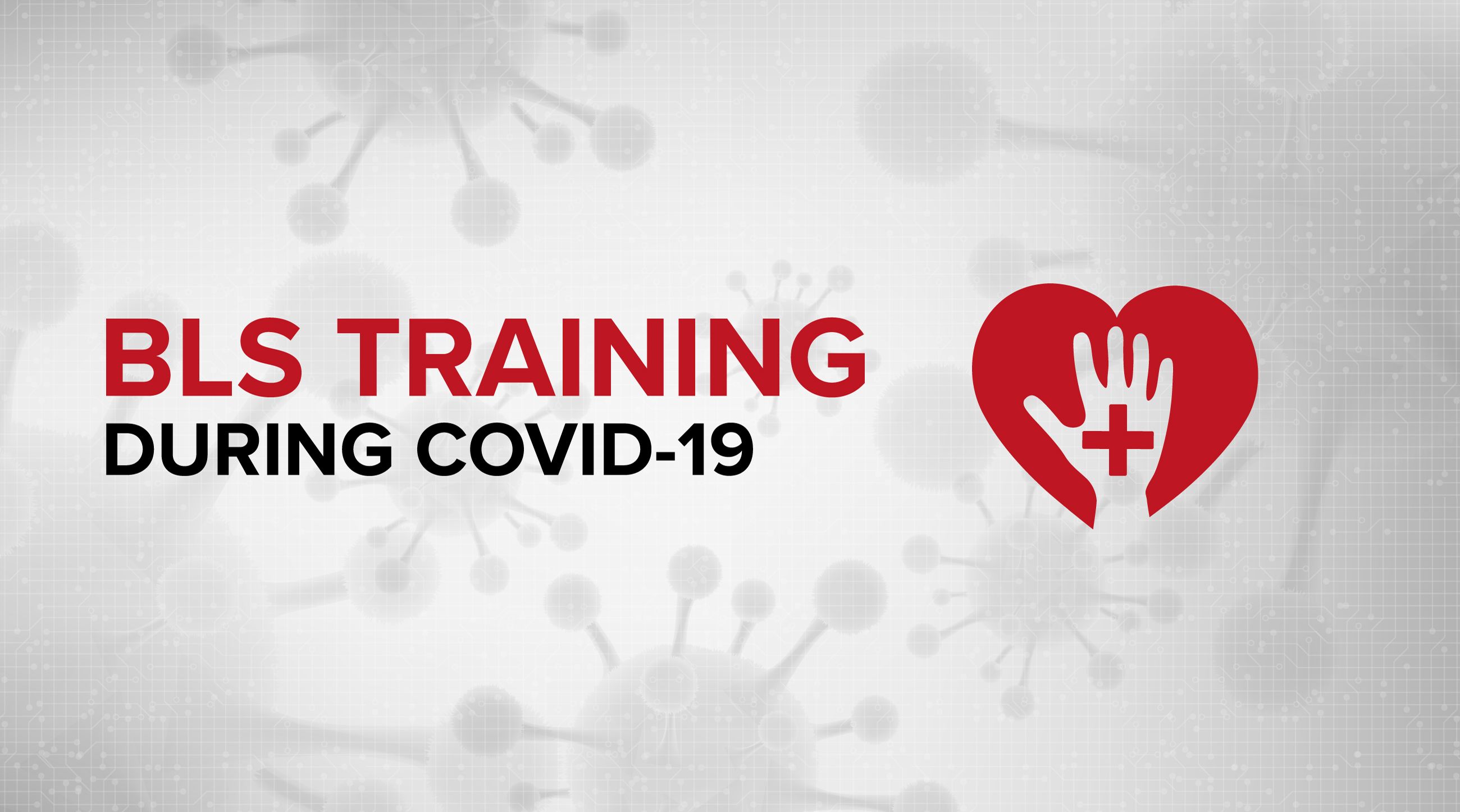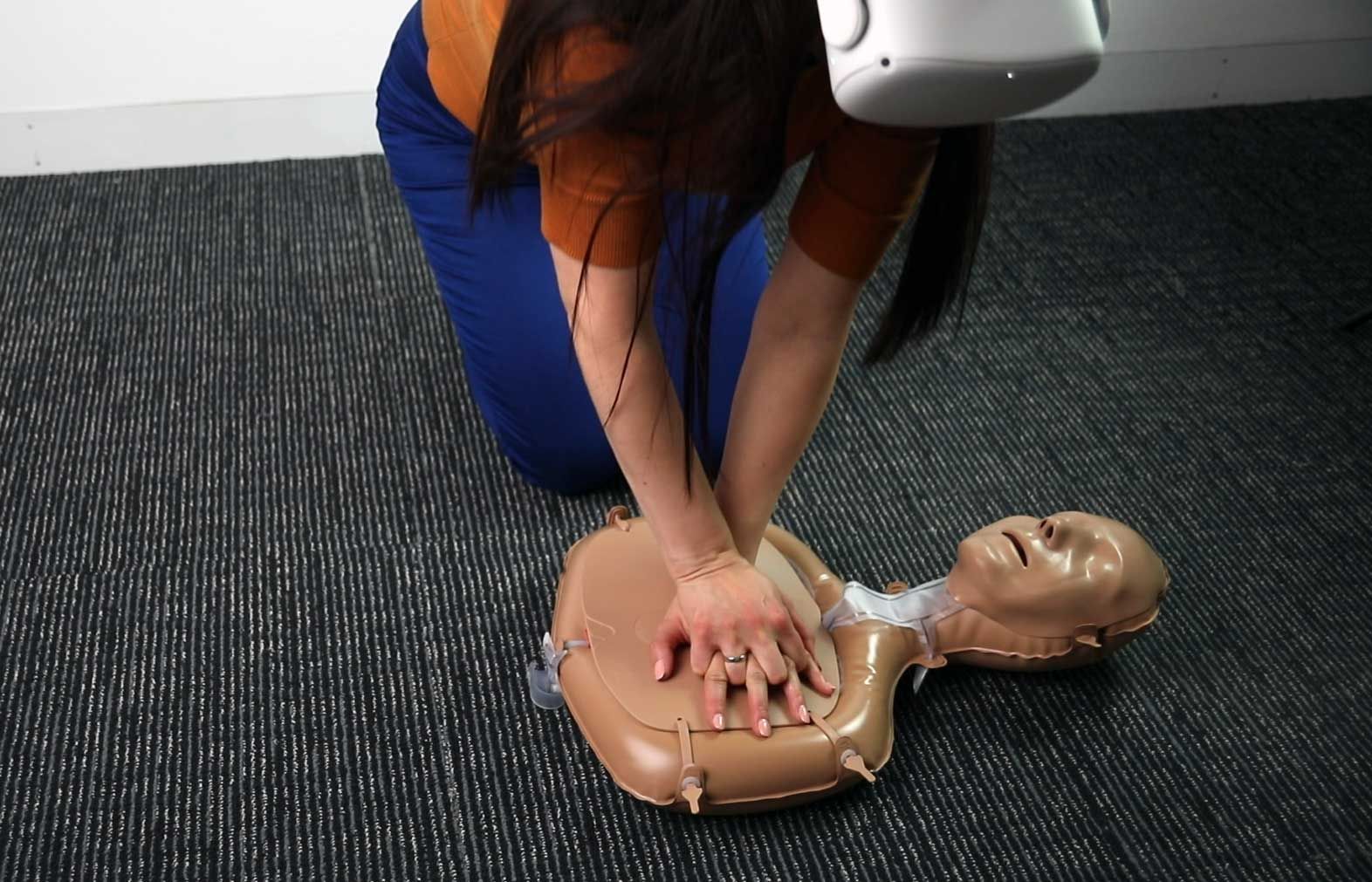BLS Training During Covid
What are the best ways to train in BLS during the pandemic, while keeping maximum safety for yourself and the others?

With the quick spread of Covid-19, 2020 has seen an unprecedented situation unfold in the world. Our lives changed dramatically, and we learnt to live in a new way, while changing our habits, lifestyle and even our human encounters.
At the time of writing this article, Covid-19 is still at its height, with more than 300,000 deaths in the US, and 1.6m deaths globally.
Thankfully, the majority of us are now very familiar with the rules we need to follow, that have been recommended by official bodies such as the World Health Organisation (WHO). These guidelines are designed to keep us and the people around us safe and minimise exposure to the virus when it comes to both our professional and personal lives.
Covid-19 and face to face training
But what are the rules when it comes to essential training such as Basic Life Support (BLS)?
Life Support training is as important as ever, and it is important to keep your training up-to-date, despite the current situation. But how can you do this safely?
A leading CPR and BLS regulatory body, the American Heart Organisation, issued a statement for training providers (updated 1st July 2020) outlining the new rules to follow when conducting training. This advice recommended following local government guidelines, WHO guidelines, and minimising training risk as much as possible in a face to face training setting.
In the past few months, these new restrictions have led to a change in the way training is done, to incorporate social distancing and/or online training sessions. Many training providers have chosen to do the majority of their training digitally, via web conferencing software, with only practical training modules done in person. Others have gone completely digital, with no face to face interaction.
VR BLS training during Covid
Another way to conduct your BLS training in a socially distant way is to use Virtual Reality. This can either be done at home, or at your office, if your organisataion has a VR headset available.

Using VR to train at home
The safest way to train is to do so with your own VR headset at home, which does not get shared with anyone else but your household.
In terms of hardware, the Oculus Quest 2 (64GB or 256GB) is a good, reasonably priced VR device for home use. You will also need to install our BLS training software - get in touch with us to find out more about how you can do this.
VR training in a public space
A lot of organisations are now choosing to train their employees in-house, with the help of Virtual Reality.
It is a great, socially distant way to train, as it allows the trainees to train by themselves without the need for a trainer and without any people in close proximity.
However, hygiene and safety are extremely important to consider when using VR headsets and VR controllers shared by multiple people in a training setting.
Safety measures for VR training in public
Source: the information below has been compiled from this article by Serious VR.
1. Detergents & hand sanitisers
The SARS-CoV-2 (COVID-19) virus is able to survive up to 72 hours on plastic according to Suman et al. (2020). Furthermore, researchers from the REALM project found that the virus was detectable for up to eight days on leather and synthetic leather materials. It should be noted that it is still unclear what the infectious dose for humans is, so the survival time of COVID-19 is no indicator for a surface being dangerous or safe. You could quarantine your headsets and controllers for an amount of time or use detergents to decontaminate. Different detergents have different effects on the survival of COVID-19 (e.g. Kampf, Todt, Pfaender & Steinmann, 2020). Keep in mind that certain detergents will probably leave some residue on the face, for example, detergents based upon chloride, which can irritate the skin or the eyes. Next to that, always follow the instructions of the specific detergent.
Ethanol-based detergents appear to be most effective against viruses (including COVID-19) and are usually readily available (Gold & Avya, 2020). It is advised to use a concentration of 70% alcohol. The minimal advisable concentration is 60% and the maximal one is 80%.
2. Cleanable & disposable face pads
As VR headsets usually have a face pad which is not waterproof, it is advisable to purchase face pads that are waterproof. Replacement with a waterproof one makes it safer and easier to properly disinfect the face pad. A cotton cover or a disposable face pad over the existing face pad, does not protect from Covid-19, as moisture can seep through. Replace the cotton cover after every user, wash it with hot water and detergent and decontaminate underneath the disposable or cotton cover after every user.
Companies that sell these waterproof face pads are for example https://vrcover.com/ & https://widmovr.com/shop/
3. Educating staff
It is important to educate staff and users on proper hygiene and safety protocols. Think educating about health checks, assertiveness during contact, building trust, and following the right protocols. It could be useful to do a risk assessment and evaluation to get a better understanding of the specific safety risks of a situation.
4. Example safety protocols
Following a set protocol and procedure will reduce human error and ensure everyone understands how the virus spreads and the risks it poses for infection. Keep in mind, the easier you make it to decontaminate the headset, the easier people will adopt your protocol.
Here is a protocol example for the end user of VR training, as well as detailed information on decontaminating the headset:
EXAMPLE SAFETY & HYGIENE PROTOCOL FOR USERS
This example protocol has been designed for general usage, to serve our non-medical as well as medical users. We highly recommend implementing a training schedule where each staff member trains individually, on their own, and if possible with at least a 72h window between each individual training session.
- When experiencing any symptoms of cold, like a sore throat, coughing, or clogged sinuses, please do not participate, even if you are on your own and there’s no one else in the training room. Please do not touch the headset.
- If there is a facilitator in the room with you, be mindful to keep a 2-meter distance between you and the other facilitator (and use COVID-19 approved masks).
- Read and listen carefully to the instructions of the facilitator (if listening, please do so over the phone or within a safe distance of 2m).
- Pick up the headset yourself and put it on your head. Under any circumstances do not let anyone else touch the headset or its accessories during the training session. If you need the facilitator’s help, please ask over a safe distance or phone / video call.
- Remove the headset yourself when finished. DECONTAMINATE the headset as per the instruction on the next protocol.
DECONTAMINATING THE VR HEADSETS & ACCESSORIES
Use a detergent with at least **70% alcohol, soap, medical disinfectant wipes**. Make sure you let the cleansed parts sit and dry according to the instructions of the detergent!
- Retrieve the potentially contaminated headset from the training area to a designated cleaning zone.
- Unplug the headset from its power source, if it's been left to charge.
- Pull off (if applicable) the cleanable face part (should be waterproof) and disinfect it with a suitable detergent. Waterproof face parts can be bought online.
- Disinfect the key areas: Top and bottom area of the headset, which you touch when putting the headset on and taking it off, head bands which keep the headset on your head, facial interface including nose area. Do not clean the lenses with anything abrasive. Use a dry microfiber cloth. Disinfect buttons that have been pressed. Do not put the headset in the sun to dry, because the sun could damage it! Do not use the headset until everything is completely dry!
- Wipe down the controllers and any accessories used. Do not use the controllers until they are completely dry.
- Disinfect your hands (with soap or alcohol-based sanitizer of at least 70%).
- Retrieve the decontaminated headset (+controllers).
If possible, do not use the headset for 72 hours or more for maximum safety. Taking the precautions above cannot guarantee 100% COVID-19 safety.
Thank you for reading this article. For any questions or more detailed information, please contact us.
Disclaimer: Even though we have done extensive research and follow the guidance of official medical bodies, we cannot guarantee full safety as COVID-19 is still being researched and there is no official guidance on VR headset usage by organisations dealing with infectious disease control.
Author

Editor
